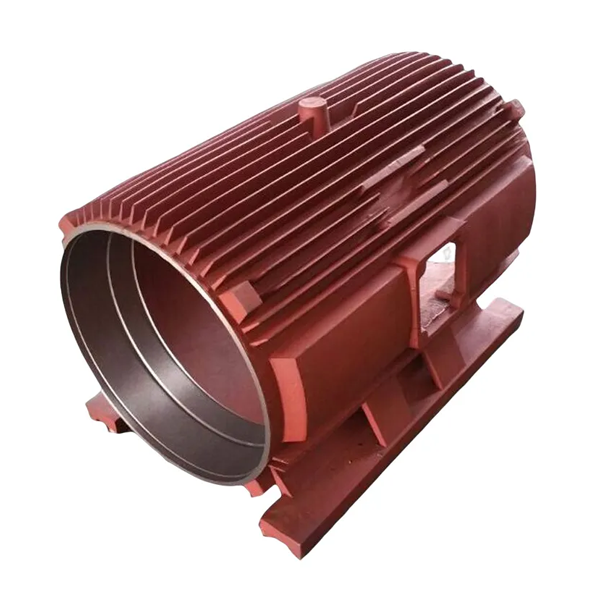
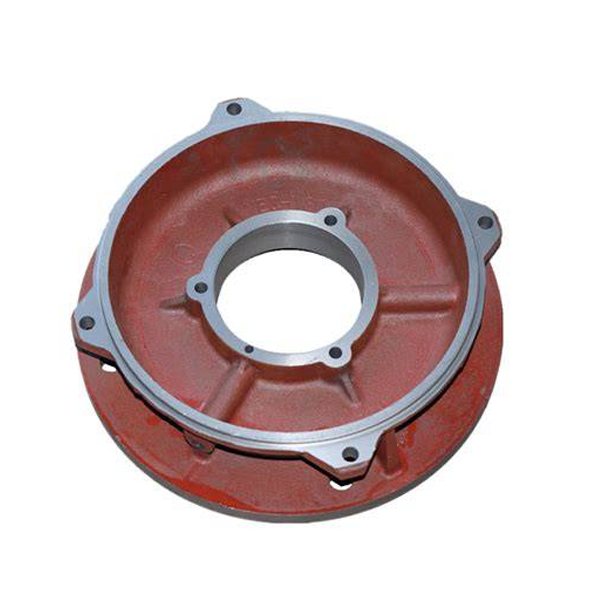
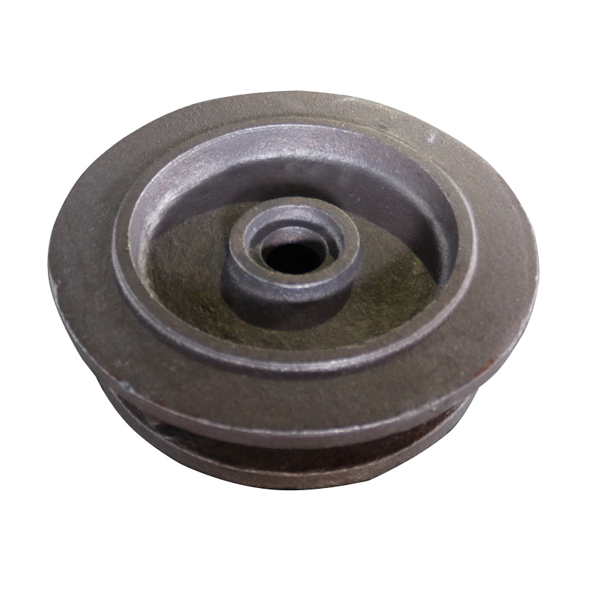

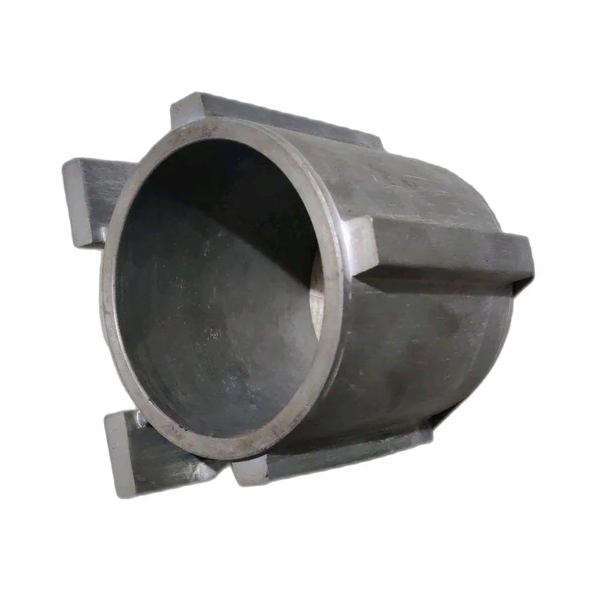
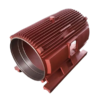
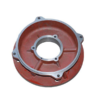
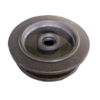
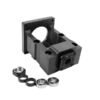
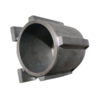
Jiangsu Shengrong specializes in the production of motor casting parts, The casting parts used for support, protection and transmission in motor structures. The parts include: base/housing, end cover, bearing seat, fan cover.
Material: gray cast iron (HT150, HT200, etc.) or ductile iron (QT400-15, QT500-7, etc.). Our cast iron parts are of high precision, wear resistance, low price and fast delivery, and are well received by customers
Material: Cast iron HT250/GG25/HT300/GG30/QT450-10/GGG45
Standard/tollerance: EN1561-2011/GB/T 9439/GB/T 1348
Size and weight: According to drawing
1. Flexible design of complex structures
The casting process can form complex structures (such as heat dissipation ribs, internal cavities, and special-shaped shells) in one go, reducing the number of subsequent processing steps. Multiple functional components (such as bearing seats and mounting flanges) can be cast into one piece to improve the integrity of the structure and reduce assembly steps.
2. Optimization of material properties
High-strength materials: commonly used cast iron (HT250, ductile iron) or aluminum alloys, taking into account both strength and lightness, to meet different load requirements.
3. Cost-effectiveness: The cost per piece is significantly reduced during large-scale casting, which is suitable for standardized motor production.
Reduced machining: The technology reduces material waste and subsequent processing time.
4. Mechanical properties and durability
High rigidity: The overall structure of the casting can withstand electromagnetic forces and mechanical vibrations, reducing the risk of deformation.
Wear and corrosion resistance: The environmental adaptability is enhanced through surface treatment (such as spraying and plating), which is suitable for harsh working conditions (such as moisture and dust).
5. Rapid prototyping: Mold casting can achieve high-speed production, especially for motor models with large order volumes. Dimensional stability: Modern casting technology (such as high-pressure die casting and precision sand casting) ensures part consistency and reduces assembly errors.
Main application components
Motor housing/base: protect internal components (stator, rotor, etc.), provide structural support and heat dissipation.
Material: cast iron (HT250, QT450), aluminum alloy (lightweight, good heat dissipation).
Process: sand casting (complex structure) or high-pressure casting (mass production).
End cover: high precision to ensure bearing fit, shockproof and sealed.
Material: cast iron, aluminum alloy or cast steel (heavy motor).
Rotor/stator core process: some small motors use die-cast aluminum rotors; stator housings are often cast iron.
Heat dissipation component design: cast heat sinks (such as aluminum alloy housings) enhance cooling efficiency.
Other structural parts such as bearing seats, terminal boxes, flanges, etc.
Industrial motors: Y series and YE3 high-efficiency motors often use cast iron housings.
New energy vehicles: aluminum alloy die-cast housings (such as Tesla drive motors).
Household appliance motors: small asynchronous motors often use aluminum alloy end covers.
Wind power/hydropower: large steel castings support heavy generator structures.
Technical Capability
1. Flexible design of complex structures
The casting process can form complex structures (such as heat dissipation ribs, internal cavities, and special-shaped shells) in one go, reducing the number of subsequent processing steps. Multiple functional components (such as bearing seats and mounting flanges) can be cast into one piece to improve the integrity of the structure and reduce assembly steps.
2. Optimization of material properties
High-strength materials: commonly used cast iron (HT250, ductile iron) or aluminum alloys, taking into account both strength and lightness, to meet different load requirements.
3. Cost-effectiveness: The cost per piece is significantly reduced during large-scale casting, which is suitable for standardized motor production.
Reduced machining: The technology reduces material waste and subsequent processing time.
4. Mechanical properties and durability
High rigidity: The overall structure of the casting can withstand electromagnetic forces and mechanical vibrations, reducing the risk of deformation.
Wear and corrosion resistance: The environmental adaptability is enhanced through surface treatment (such as spraying and plating), which is suitable for harsh working conditions (such as moisture and dust).
5. Rapid prototyping: Mold casting can achieve high-speed production, especially for motor models with large order volumes. Dimensional stability: Modern casting technology (such as high-pressure die casting and precision sand casting) ensures part consistency and reduces assembly errors.
Main application components
Motor housing/base: protect internal components (stator, rotor, etc.), provide structural support and heat dissipation.
Material: cast iron (HT250, QT450), aluminum alloy (lightweight, good heat dissipation).
Process: sand casting (complex structure) or high-pressure casting (mass production).
End cover: high precision to ensure bearing fit, shockproof and sealed.
Material: cast iron, aluminum alloy or cast steel (heavy motor).
Rotor/stator core process: some small motors use die-cast aluminum rotors; stator housings are often cast iron.
Heat dissipation component design: cast heat sinks (such as aluminum alloy housings) enhance cooling efficiency.
Other structural parts such as bearing seats, terminal boxes, flanges, etc.
Industrial motors: Y series and YE3 high-efficiency motors often use cast iron housings.
New energy vehicles: aluminum alloy die-cast housings (such as Tesla drive motors).
Household appliance motors: small asynchronous motors often use aluminum alloy end covers.
Wind power/hydropower: large steel castings support heavy generator structures.
Technical Capability

1. Design and mold preparation
3D modeling: Design casting drawings (such as housing, end cover, rotor, etc.) according to motor performance requirements, taking into account shrinkage, machining allowance, etc.
Mold manufacturing: Commonly used sand molds (wood molds/metal molds), metal molds or lost foam molds, the dimensional accuracy and surface finish of the molds must be guaranteed.
2. Material selection and smelting
Material: Usually cast iron (HT200/HT250), cast aluminum (ADC12) or cast steel (such as ZG230-450) are selected, depending on the motor load and heat dissipation requirements.
Smelting:
Cast iron: Smelt in a cupola or electric furnace to control the carbon and silicon content.
Composition detection: Use a spectrometer to ensure that the melt composition meets the standard.
3. Casting process
Sand casting (commonly used):
Molding: Use molding sand (clay sand, resin sand) to make upper and lower sand boxes, and place the mold to form a cavity.
Core making: Use sand cores to form the internal cavity of the casting (such as cooling channels).
Assembling the sand core and the sand box to ensure accurate positioning.
Pouring: Control the temperature (such as about 1300-1400℃ for cast iron) and speed to avoid pores and cold shuts.
4. Cooling and cleaning
Cooling: Natural cooling or controlled cooling rate (to prevent deformation or cracks).
Sand drop: Vibrate to remove the molding sand and take out the casting.
Cleaning: Remove the pouring head, flash, and burrs (grinding wheel cutting or shot blasting).
5. Heat treatment (as needed)
Annealing/aging: Eliminate internal stress (especially cast iron parts).
Quenching + tempering: Improve the hardness and toughness of steel castings.
6. Machining
Turning/milling/drilling: Process key mating surfaces such as bearing seats, end faces, screw holes, etc.
Dynamic balancing: Rotor castings require dynamic balancing tests.
7. Quality inspection
Dimension detection: Calipers and three-coordinate measuring instruments are used to check drawing tolerances.
Nondestructive testing: X-ray or ultrasonic testing to check internal defects (pores, shrinkage).
Performance testing: tensile strength, hardness (such as Brinell hardness tester), etc.
8. Surface treatment and rust prevention
Painting/electrophoresis: anti-corrosion (especially outdoor motors).
Anodizing (aluminum parts): enhance surface hardness and corrosion resistance.

Appearance inspection
Surface defects: Check whether there are defects such as pores, shrinkage holes, cracks, slag inclusions, cold shuts, etc. on the surface of the casting.
Surface finish: Evaluate whether the surface roughness meets the standard (such as Ra value).
Contour integrity: Check whether there are process problems such as insufficient pouring, deformation or flash.
Tools: Visual inspection, magnifying glass, surface roughness meter.

Key dimensions: Use calipers, micrometers, and coordinate measuring machines (CMMs) to check whether key parts such as shaft holes, mounting surfaces, and external dimensions meet the tolerances of the drawings.
Geometric tolerances: Check flatness, roundness, coaxiality, etc. (such as the fit between the end cover and the bearing chamber).
Mold wear: Regularly verify whether the mold has dimensional deviations due to wear.

Internal defect detection
X-ray/ultrasonic flaw detection: detect internal defects such as pores, shrinkage, cracks, etc. (especially suitable for important load-bearing parts).
Penetrating testing (PT): used for surface microcrack detection (such as fluorescent penetration or color penetration).
Magnetic particle testing (MT): suitable for near-surface defect detection of ferromagnetic materials.

Chemical composition analysis: Use a spectrometer (OES) to detect material composition (such as whether aluminum, cast iron, copper alloy, etc. meet the standards).
Mechanical properties: Test tensile strength, hardness (Brinell/Rockwell), elongation, etc. (sampling is required to make test bars).
Metallographic analysis: Observe the microstructure (such as graphite morphology, grain size) to determine whether the casting process is reasonable.
1: Advanced technology and equipment standards
Advanced technology: Sand casting, precision casting, and lost foam casting process. Casting sizes according to customer requirements, weights ranging from 0.5kg to 10,000kg
Automation equipment: Equipped with automated production lines, intelligent melting furnaces (medium frequency/high frequency induction furnaces),
Inspection equipment: Chemical composition/spectrometer and mechanical property inspection equipment, three-coordinate measuring machine (CMM), X-ray flaw detector, spectrometer, ultrasonic testing and other high-end quality inspection methods.
2:Quality management system
ISO 9001 (quality management system)
IATF 16949 (automotive industry quality management system, such as automotive parts)
ASTM/EN/JIS and other international material standards.
3:Customization capability
Customized production according to customer drawings, customers only need to pay half of the mold fee to develop new castings. The mold time is short, only 20 days, and the casting time only 10 days. Machining 10 days.
Free express sample to customers, mass production after customer samples are confirmed to be fully qualified. Our company does not require customers to place a minimum order quantity, satisfying customers with a variety of choices
4:Competitive prices
Our company’s prices are very competitive in the industry, and the specific price depends on the casting drawing and the customer’s order quantity. Welcome to inquire








Carbon, silicon, manganese, sulfur, phosphorus, chromium, nickel, copper and other elements

Tensile strength, yield strength, elongation, hardness, impact strength

Three-coordinate inspection, non-destructive testing, pressure testing, etc.

Every parts we will use anti-rust oil packing or primer, keep every parts in good condition after long time shipping.For small parts, we use wood box pallet packing.For bigger parts with pallet packing

Jiangsu Shengrong High end Equipment Manufacturing Industry Co., Ltd is a professional iron casting foundry about 26,000 square meters, Investment of 80 million yuan,include intermediate frequency furnace, new east Seoul horizontal line, cast star horizontal line, micro crystal automatic casting machine, 40T mixer and 20T mixer, core-making machine, shot blasting machine, machining center, inclined rail lathe, slot machine, vertical lathe, flat rail lathe and other equipment.Testing equipment:spectrometer, tensile testing machine, hardness tester, etc., and supporting chemical testing laboratories. Mainly engaged in: mechanical parts, auto parts, industrial pump parts, bearings and transmission parts manufacturing. Company’s main business: QT450-12, 500-7, 600-3 ball mill castings and HT250, HT300 gray iron castings and cast steel, stainless steel and other business, with the increase of business volume, the production is not only to meet the main business, while the product after the process of product processing business development, so that enterprises diversified production. Now the company has more than 100 employees, including a professional management team and new product development.
CONTACT
Get In Touch